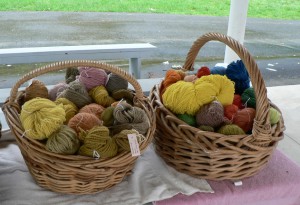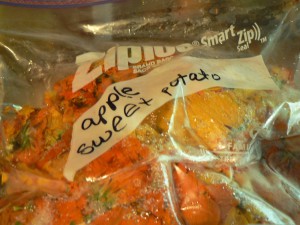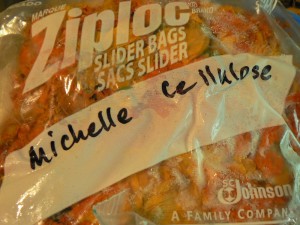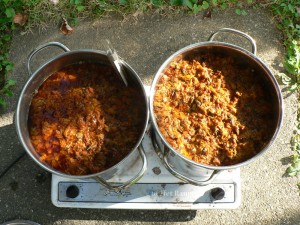This post falls into the category of better late than never. Over a month ago, now, I did a natural dyeing demo at the Massachusetts Sheep and Woolcraft Fair in Cummington, MA. It was a very rainy, windy and cold weekend. The high on Saturday was about 40. They were forecasting snow flurries for the hilltowns that night. Sunday was a bit better, with a high around 50, but still very rainy. Nevertheless, intrepid visitors showed up, and I had some great conversations with people about their favorite dyeplants (jewelweed and dahlias, which I have never tried) and their favorite ways of storing valuable dyebaths (in the freezer, which alas our freezer isn’t big enough to do).
I focused on dyeplants that can be found or grown here in Massachusetts. Here are the baskets with my samples of wool yarns.
The one on the right shows yarns dyed with cultivated plants (cosmos, woad, madder, weld, etc.). The basket on the left shows wildflowers (Queen Anne’s Lace, tansy, black walnut, umbilicate lichen, purple loosestrife, etc.). Continue reading “Massachusetts Sheep and Woolcraft Fair”




